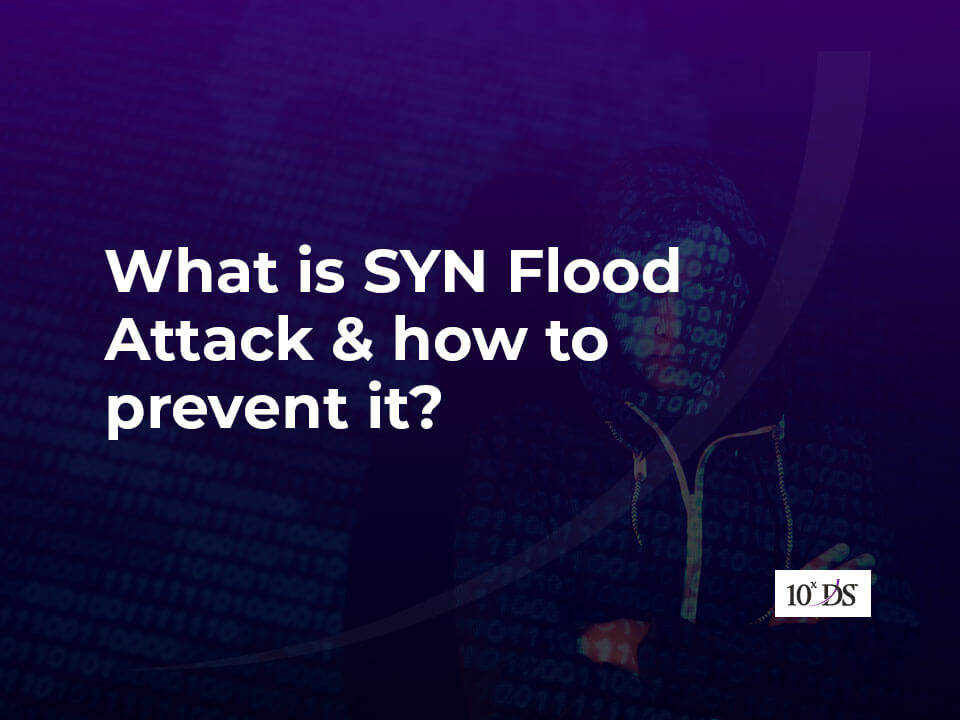
What Is SYN Flood Attack & How To Prevent It?
A SYN flood or half-open attack can be defined as a type of DDoS (distributed denial-of-service) attack, which can target all systems that are connected to the internet and the ones offering TCP (Transmission Control Protocol) services such as file transfer, email server, and the web server.
SYN flood is a form of Transmission Control Protocol State-Exhaustion Attack, which tries to consume connection state tables, which are present in application servers, IPS (Intrusion Prevention Systems), firewalls, load balancers, and other infrastructure components.
In other words, SYN flood attack will try to flood a server or system with an overwhelming number of requests for consuming resources and eventually disabling the system. Cyber attackers and hackers send SYN or initial connection requests repeatedly during an SYN attack.
This in turn enables them to overwhelm the available ports on the targeted device, which causes it to not respond to legitimate traffic requests or respond sluggishly. If you are unfamiliar with SYN flood attacks, then you should have a clear understanding of how they work.
How Does SYN Flood Attacks Work
SYN flood attacks usually work by exploiting the TCP connection’s handshake process. Three distinct processes are exhibited in a TCP connection under normal conditions for establishing a connection and they are as follows.
- A SYN packet will be sent by the client for initiating the connection
- The server will use SYN/ACK packet to respond to the initial SYN packet for acknowledging the communication
- In the final stage, the client will send an ACK packet acknowledging the reception of the packet sent by the server.
Once the sequence of sending and receiving packets is completed, the TCP connection will be open, which means that you can now receive and send data.
Most cyber attackers who are attempting to launch a denial-of-service attack are well aware of the fact that a server will be responding with either one or more SYN/ACK packet after receiving the initial SYN packet from the client. Attackers will try to exploit this and wait for the last step in the handshake process.
- Cyber attackers will send large volumes of SYN requests to the server that they are targeting. They often use spoofed IP addresses for sending large numbers of SYN requests.
- The target server will be responding to each individual connection request. The server will also leave an open port for receiving responses.
- The target server will now be waiting for the final ACK packet that will never arrive. Meanwhile, the attacker will continue to send more SYN packets.
The target server will maintain an open port connection due to the arrival of continuous SYN packets for some period. The server will fail to normally function once all the ports have been used.
This means that there will be a connection option on the server-side, but there won’t be an open connection in the machine on the other side. This is considered to be a half-open connection in networking.
In such types of DDoS attacks, the server will continue to leave open connections due to the overwhelming number of requests. In fact, the target server will wait for each connection to get timed out to make the ports available again. As a result, such types of attacks are called half-open attacks.
How to Prevent SYN Flood DDoS Attacks
IPS devices and firewalls are critical when it comes to network security. However, the issue is that they will fail to offer protection to your business against sophisticated and complex DDoS attacks. Hackers and cyber attackers are using innovative and complex techniques these days.
As a result, it is essential for businesses to come up with an effective multi-faceted approach to prevent the chances of falling prey to SYN DDoS attacks. Here are a few effective tips, which will enable you to prevent SYN flood DDoS attacks.
- Identifying anomalous traffic patterns by installing an Intrusion Prevention System (IPS)
- Configuring the onsite Firefall for SYN flood protection and SYN attack thresholds
- Installation of modern and up-to-date networking equipment with rate-limiting capabilities
- Installation of commercial tools for gaining better visibility across your entire business network. This will give you the ability to analyze and see traffic in different sections of the network
- Firewall Filtering
- SYN Cookies
Conclusion
Any type of cybersecurity attack that include SYN attacks are painful and can severely affect your business if you do not have essential security measures in place. Protection against SYN Flood attacks and other types of DDoS attacks often come as a part of the plan of hosting providers. In fact, most of the public cloud providers include protection against such attacks among their offerings. So, it is best to choose a hosting or cloud provider that provides such services to clients.
10xDS – NXSecure is a fully integrated comprehensive cyber security transformation program followed by managed cybersecurity services. Our team can guide you and help you better safeguard your critical assets against security threats like SYN attacks; talk to our cybersecurity experts now!


